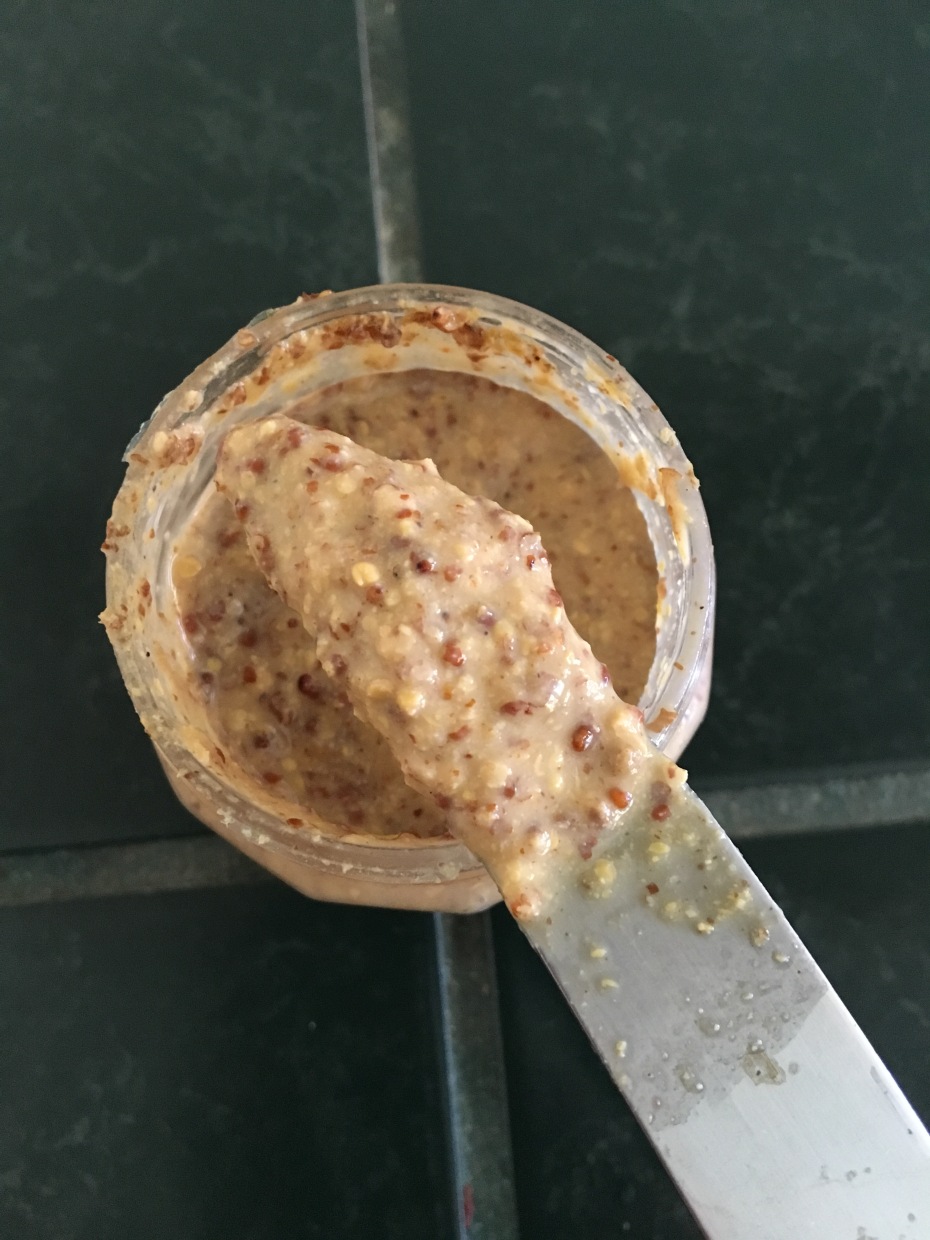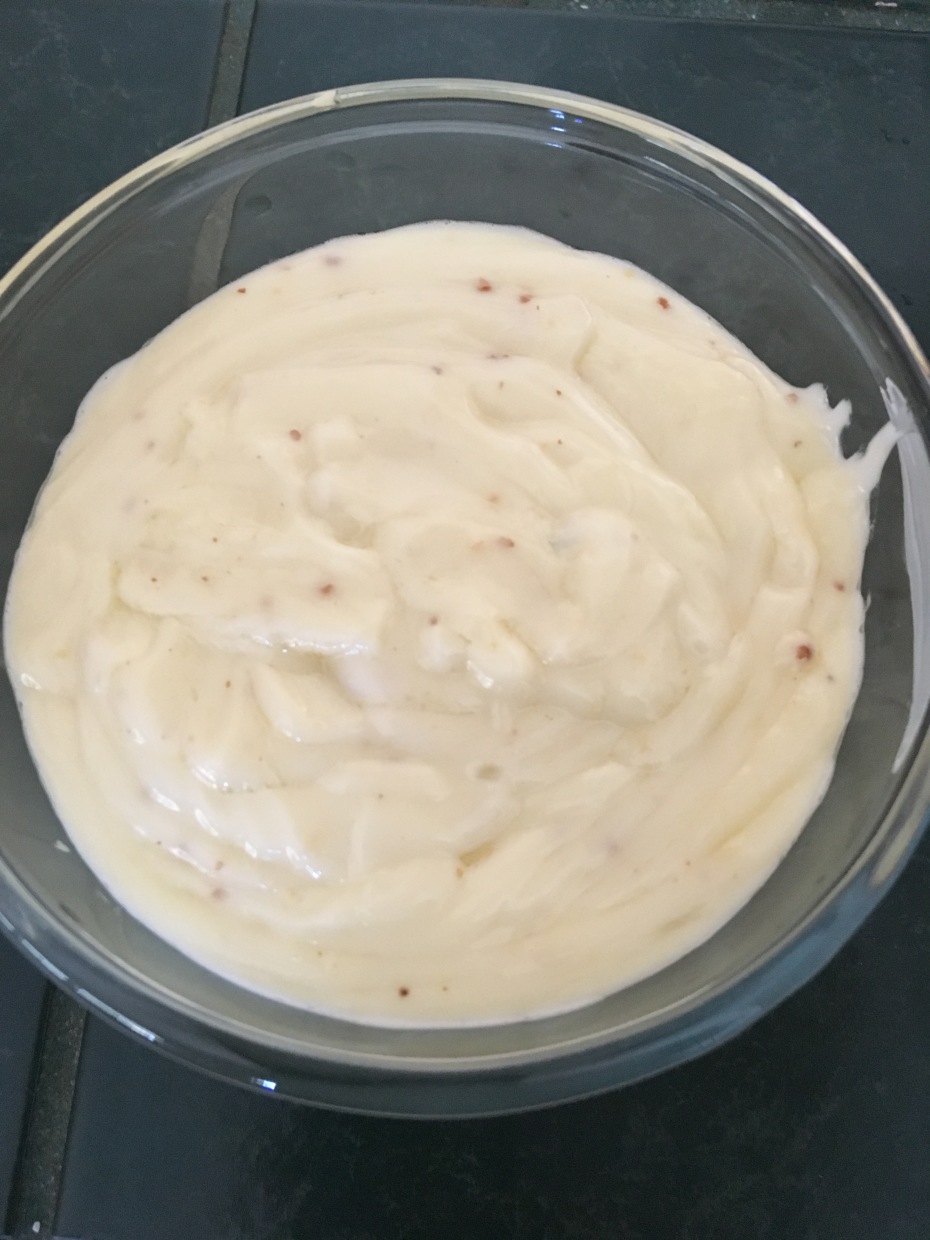
Today was the first day I attempted mayonnaise. It came out what looked to be perfect. It made great peaks, it tasted fantastic. We put little dollops on our soft boiled eggs, and sprinkled a tiny bit of Maldon finishing salt over it all, and it was heavenly.
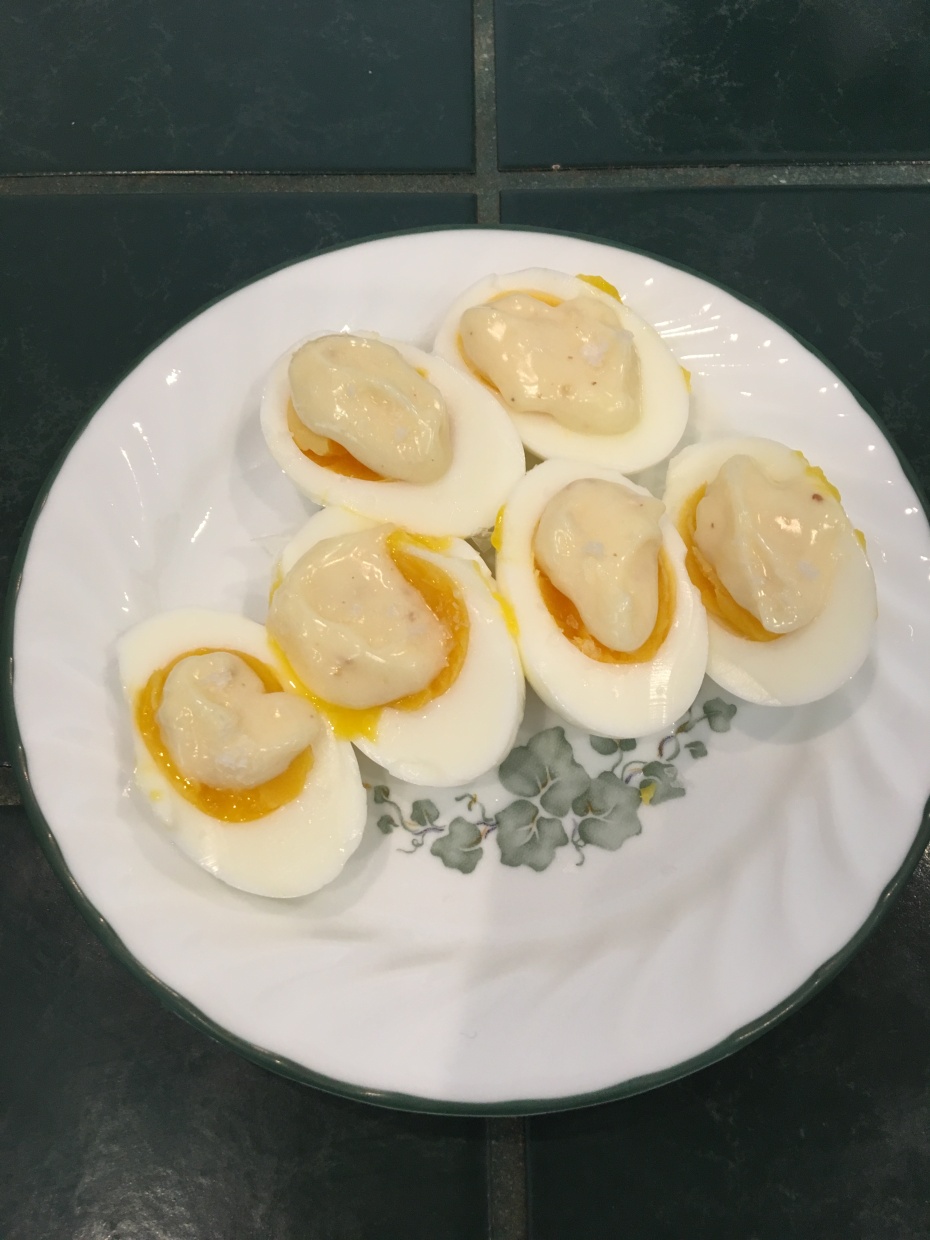
However, by the time we finished breakfast, our mayonnaise looked like this:
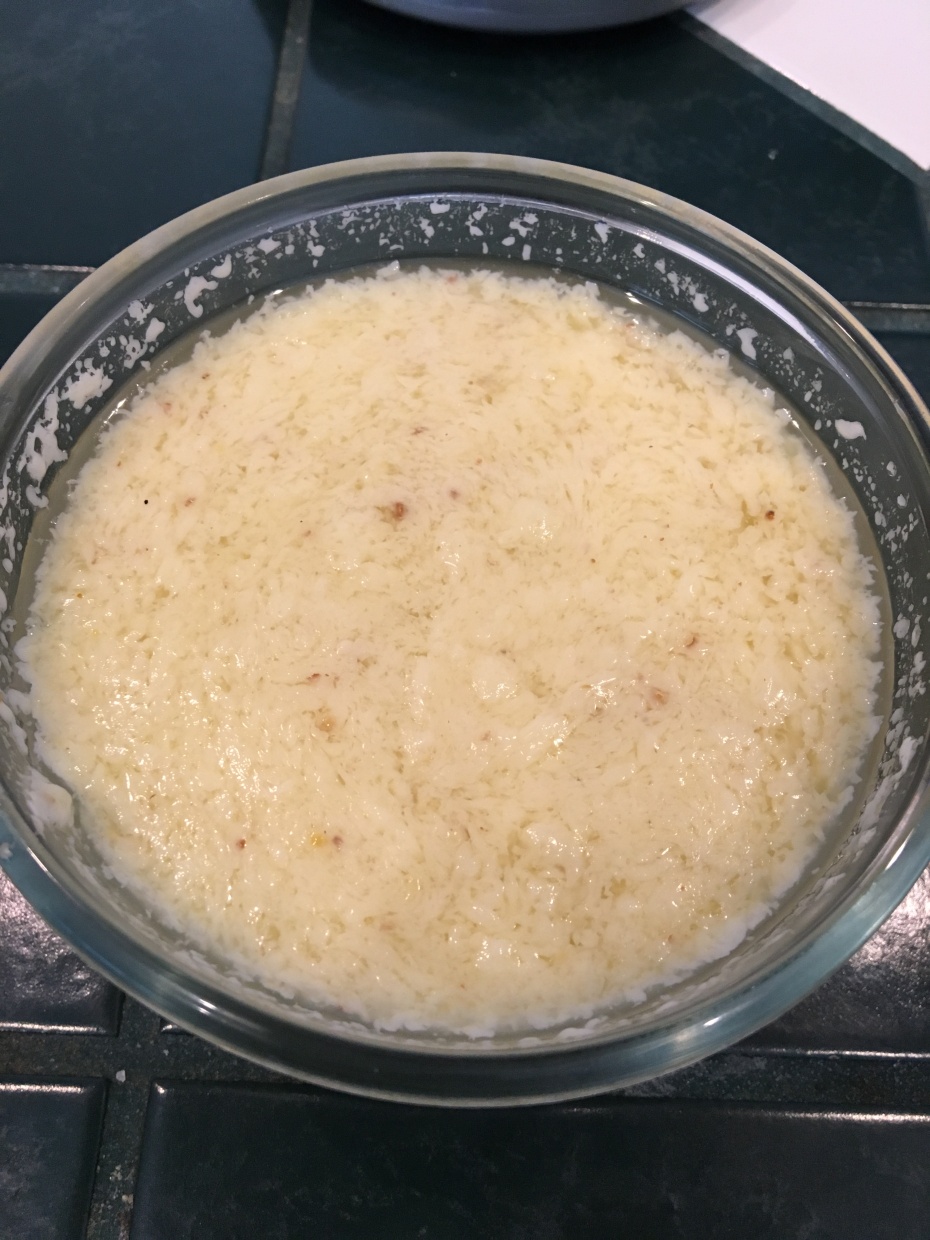
I knew there had to be a way to fix it, and sure enough, one way to do it is to start over with 1 tablespoon of water, dribbling in a little bit of the broken mayonnaise at a time and re-whisking it, adding water as needed once it gets too viscous. It worked.
You can see here the broken mayonnaise on the left spoon vs the fixed on the right.
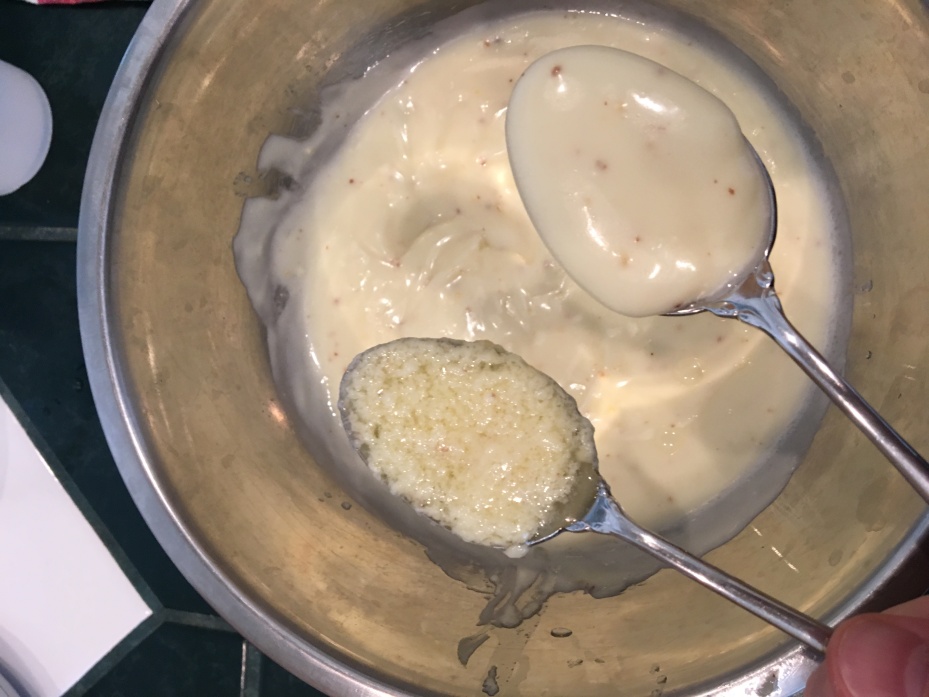
An hour later at room temp the mayonnaise has not budged in it’s form, so I stirred it, and put it in a container in the fridge. Another hour in the fridge, and it’s still good to go.
Time will tell whether it decides to break down again or not, but so far so good.
If it does break down again, I’ll repeat the process until it stays together.
I used an egg yolk, ‘Plochman’s Original Stoneground Dijon Mustard’, water, white wine vinegar, canola oil, lemon juice from fresh lemons from our lemon tree, and kosher salt.
The basic recipe is below, and is Chef Thomas Keller’s recipe:
Fresh Hand Whisked Mayonnaise
Ingredients:
1 Egg Yolk
Dijon Mustard – 5 grams
White Wine Vinegar – 7 grams
Lemon Juice – 7 grams
Canola Oil – 350 grams (Any neutral flavored plant based oil will work, I used canola)
Water – Several tablespoons. Just get a small bowl and put a tablespoon in it, use as needed once it gets thick.
Equipment:
Mixing bowl
Whisk
Damp kitchen towel
Spatula
Cutting board
Paring knife
Glass jar to store Mayonnaise in.
Instructions:
You will be whisking constantly in this recipe, but the end product is well worth the effort.
Dampen the kitchen town, wring it out, then fold it over into a triangle and roll it into a turban shape. Form a crown around the bottom of the mixing bowl to stabilize it.

Whisk the yolk in the mixing bowl, then add and whisk the dijon mustard into it. The dijon mustard helps with emulsification. Continue whisking with your dominant hand as you S L O W L Y whisk in oil. I put mine in a condiment squirt bottle, and it works great. As the mayonnaise starts to thicken add a tablespoon of water. Keep whisking and add the vinegar and the lemon juice. Keep slowly adding oil.
If the mayonnaise breaks aka separates and turns into runny goop, the oil has overwhelmed the yolk’s ability to bind it, and you can do one of two things.
1.) Add more mustard to help it re-emulsify. (This will also make it more mustardy tasting.)
2.) Start in an empty mixing bowl with 1 tablespoon of water and whisk the broken mayonnaise into the water a drop at a time until it re-emulsifies, then slowly mix it back in about 1 tablespoon at a time, adding more water, also 1 tablespoon at a time, whenever it gets too thick and harder to whisk.
I didn’t want it more mustardy and so I chose option #2, and so far so good, it’s holding after an hour+ at room temp and the first time it broke completely after about 15 minutes.
Keep whisking and adding oil until you get to the viscosity you want and see peaks form. Taste and add salt and lemon juice a little at a time to your own personal taste.
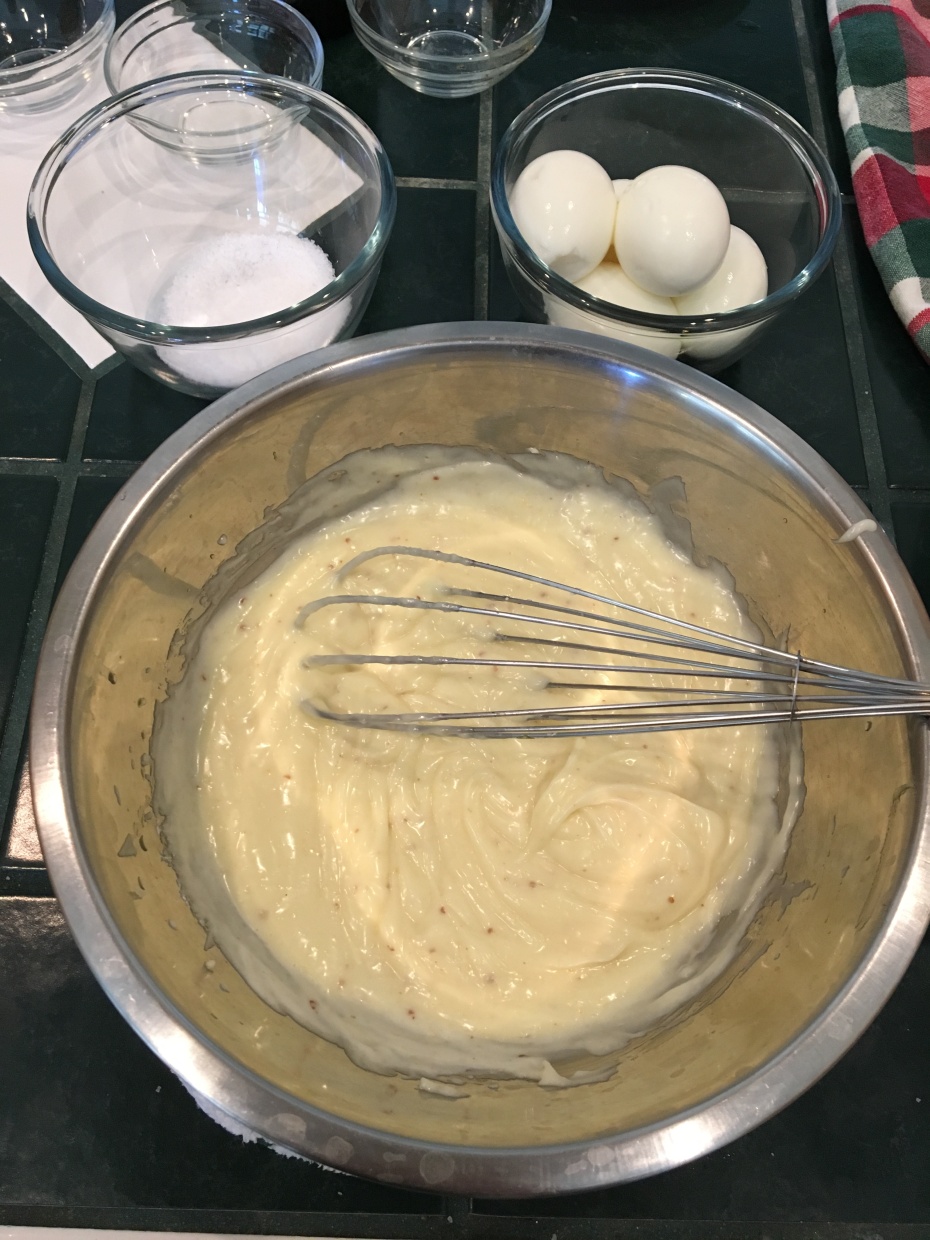
Trust me when I say this: Leave it in the mixing bowl for half an hour at room temp. Then come back to it. It’ll be easier to fix if you don’t have to take it out of a jar and put it BACK into the mixing bowl.
If it holds after 30+ minutes, you should be good to go to put it into the glass jar to store it in the fridge.
In hindsight, I think the coarse mustard may have been the source of my emulsification issues, vs a much smoother mustard with more actual ground mustard in it. I will note this and use regular dijon mustard next time.
